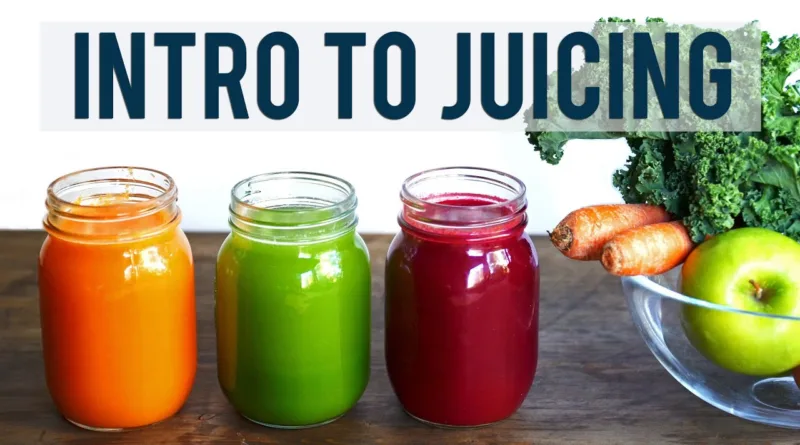Intro to Fruit Vegetable Juicing | Juicing Benefits, Tips and Recipes
Fruit vegetable juicing refers to the process of extracting the liquid content (juice) from fruits, vegetables, and sometimes herbs, to create a flavorful and nutrient-rich beverage. It has gained popularity as a way to incorporate more vitamins, minerals, and antioxidants into one’s diet in an easily digestible form. Here’s an introduction to juicing:
Nutritional Benefits:
Juicing allows you to consume a concentrated amount of nutrients from a variety of fruits and vegetables. These nutrients include vitamins (such as vitamin C, vitamin A, and various B vitamins), minerals (like potassium and magnesium), and beneficial plant compounds (phytonutrients).
Hydration: Freshly made juices are an excellent way to stay hydrated, as they provide a source of water along with the natural flavors and nutrients of the ingredients.
Digestibility: Juices are easier to digest compared to consuming whole fruits and vegetables. The juicing process breaks down the plant fibers, making the nutrients more readily available for absorption.
Variety: Juicing allows you to mix and match a wide range of fruits and vegetables, creating unique flavor combinations and enhancing the diversity of nutrients in your diet.
Potential Health Benefits of Fruit Vegetable Juicing:
Many proponents of juicing claim various health benefits, such as increased energy, improved skin complexion, weight loss, and support for the immune system. However, it’s important to note that while juicing can be a part of a healthy diet, it should not replace whole fruits and vegetables in your daily intake.
Types of Juicers: There are different types of juicers available, including centrifugal juicers, masticating juicers, and cold press juicers. Each type has its own method of extracting juice and may have different impacts on the nutrient content and shelf life of the juice.
Fiber Consideration: While juicing removes most of the fiber found in whole fruits and vegetables, the remaining pulp can still contain some fiber. Some people use this pulp in recipes or incorporate it into other dishes to minimize waste.
Sugar Content: It’s important to be mindful of the sugar content in your juices, especially if you’re using predominantly sweet fruits. Balancing sweet fruits with vegetables or adding ingredients like lemon or ginger can help reduce the overall sugar content.
Freshness: Freshly made juices are best consumed shortly after preparation to ensure maximum nutrient content and flavor. If you’re making juice in advance, store it in an airtight container in the refrigerator for a short period.
Fruit Vegetable Juicing Personalization:
Juicing is highly customizable to your taste preferences and nutritional goals. You can experiment with different ingredient combinations to find what you enjoy most.
Remember that while juicing can be a valuable addition to a healthy diet, it’s important to maintain a balanced intake of whole fruits, vegetables, and other food groups to ensure you’re getting all the necessary nutrients. Consulting with a healthcare professional or registered dietitian before making significant dietary changes is always a good idea.

